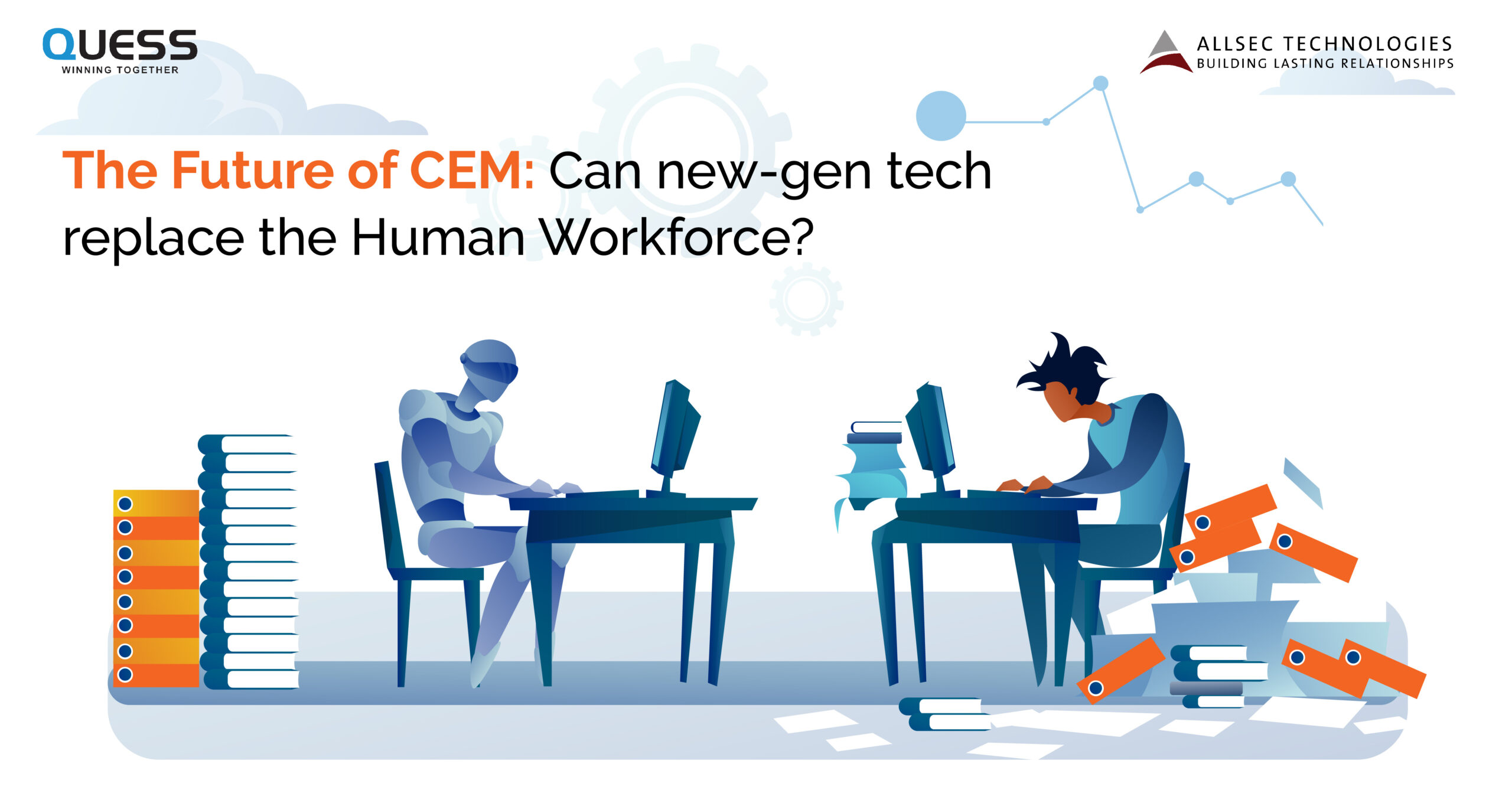
The Future of CEM: Will new-gen tech replace the Human Workforce?
Tailoring customer experience to influence conversion has been a quest for every organization. Businesses or sellers of products may have come a long way from the days of the barter system, but one thing remains constant: the one that gives their customers the best experience always wins.
No wonder companies pour millions of dollars into call centres, feedback collection technology, and analysis tools to emerge victorious in the customer experience battle.
However, recently, organizations are shifting their focus more on AI-powered technology.
Here are the two main reasons why:
Preference for Digital Assistants has risen
AI-powered digital assistants have surged in popularity in the last few years. In 2019, 3.25 billion digital voice assistants were used across the globe. Moreover, predictions show that by 2023, 8 billion digital assistants will inhabit the earth.
Not only are they being used for query resolutions, but chatbots and voice bots are also used as an active mode of feedback collection. The global shift to remote working in 2020 has also accelerated the use of digital assistants.
Customers are not only ready to engage with these virtual touchpoints, but they also seem to prefer them more. During the lockdowns, chat sessions increased by 22%, and phone calls dipped by 24%. Customers love the convenience of not having to wait on hold for hours and the instant solutions provided by digital bots.
Real-time action becomes more agile
With AI-powered tools for feedback analysis and customer journey documentation, taking preemptive action becomes easier for business owners. They get the power to collect real-time data on how their customers are interacting with them and modify their strategy faster. Moreover, with quicker processing of surveys, text analytics, and predictive analysis becoming the need of the hour, organizations can’t afford to rely entirely on the human engine.
So, where does the human workforce fit into the equation? Are they at the precipice of being shelved? Hardly not.
On the contrary, there will be more need for an empathetic human workforce that can work with technology to optimize existing workflows and drive growth.
The Human-CEM Tech symbiosis
The increased use of technology in CEM will mean a higher demand for trained individuals with specializations. Those with the skills to interpret data, use technology to boost productivity, and take pre-emptive decisions will be in high demand.
Moreover, AI-powered tools will eliminate tedious and repetitive tasks such as sorting out feedback types and resolving minor queries. This scenario will leave room for the human workforce to expand their role, experiment, and focus on innovative projects.
Hence, contrary to popular belief, the increasing popularity of CEM tech in the workplace will increase productivity and by extension overall motivation of the human workforce. However, companies do need to figure out how to utilize technology to augment their business processes.
They must ensure that their human resources are being used efficiently in departments that matter. Organizations can do this by:
- Reimagining the workflows and employee-employer relationship
- Adopting flexible digital transformation tools that optimize existing processes, and
- Allocating roles bases on skills and automating time-consuming tasks.
These steps will promote increased accuracy in understanding the customer. They will also make feedback implementation much swifter, and customer lifecycle analysis extremely comprehensive.
Remember, the skilled worked force are the knights in shining armour for an organization, and AI-powered tools are their lances. Laying down an effective strategy that allows humans and new-gen tech to augment each other’s productivity is the need of the hour.
Allsec delivers robust Customer Experience Management strategies with the right balance of innovative technology and digital transformation. Reach out to us for more information.


